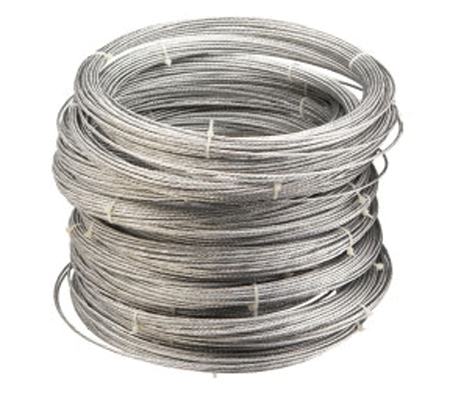You’ve seen them on very large broadcast antennas… how do you know if you need them? Guy wires are those wires that connect the top of an antenna to a point on the ground or roof, and keep the antenna stable in high winds. There’s nothing magical about a guy wire. Solid Signal sells them or you can use any high-tension wire available locally.
How is a guy wire used?
Guy wires are attached from a point high up on the tower on one side, and to a secure point on the ground on the other. Guy wires are easy to install: attach three of them where the mast attaches to the antenna. They can twist on or you can attach them into the mounting bolts. For a super-secure fit drill holes in your mast and use bolts to attach the wires, but that’s not super-necessary in most cases.
Attach the other side of the guy wires to points on your roof or on the ground, and slowly tighten the wires so that all three are nice and tight and the antenna can’t move. Ideally the three wires should be mounted 120 degrees apart from each other but in the case of large bowtie antennas that may not be possible, so just mount them as far from each other as possible without letting any of them block the antenna.
The idea of a guy wire is to transfer some of the weight of the tower to multiple points on the ground. Even though you’re using a very skinny tower, a guyed installation acts as if the tower were as wide as the triangle made by the wire’s attachment to the ground.
Does your installation need guy wires?
There’s no firm guideline for knowing if you need guy wires, although I would say any tower over 20 feet should probably have them. As a tower gets taller and taller, it also becomes more and more top-heavy and prone to sway in the wind. Guy wires, properly installed, will help secure it.
In some cases guy wires are mandatory. You should always talk to your local city planning office with this sort of thing. This is definitely true if you’re planning to put something up more than 10 feet above your roofline. Local ordinances are different from city to city. You may need guy wires, you may even need obstruction lighting.
Where does the term “guy wires” come from?
That’s a good question and my research wasn’t able to uncover the answer. I know a lot of uninformed people call them “guide wires” when they talk about them. That’s not correct and the term “guy” doesn’t seem to come from “guide,” people are just mispronouncing. If I had to guess I’d think it would come from nautical use. You see similar lines on old ships to keep the mast from snapping off. I don’t know who discovered that these ropes would help keep things steady. I have to wonder if the person’s name… was Guy.
Shop for tower components at Solid Signal
When the wind comes blowing, guy wires will help you feel confident. You’ll know that your antenna can weather the storm, and that you’ll keep watching TV no matter what. And, whether you need guy wires or any other form of antenna tower component, you’ll find the best selection at Solid Signal.





